PORTWELL USB-COM-2SM
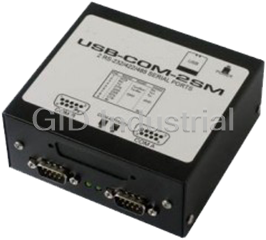
Description
USB two-port serial RS-232/422/485 adapter designed for use with any computer system equipped with a USB port. PC/104 sized board and mounting holes installed in a small rugged enclosure with two DB9 connectors.
Part Number
USB-COM-2SM
Price
Request Quote
Manufacturer
PORTWELL
Lead Time
Request Quote
Category
I/O Products
Specifications
Categorization Information
IO Products
Features
- Two-port serial communications adapter for USB 1.1 and USB 2.0 host ports
- Supports field selectable RS-232, RS-422 or RS-485 protocols, per port
- Includes type FT232 UART with 384-byte receive/128-byte transmit FIFO buffers
- Speeds up to 921.6Kbps for RS-422/485 and 230Kbps in RS-232 mode
- Power and individual port activity LEDs visible at front panel
- All required power drawn from USB port, no external power adapter required
- Compact, low profile enclosure
Datasheet
Extracted Text
C (C C MODEL USB-COM-2SM USER MANUAL FILE: MUSB-COM-2SM.A1a Notice The information in this document is provided for reference only. Portwell does not assume any liability arising out of the application or use of the information or products described herein. This document may contain or reference information and products protected by copyrights or patents and does not convey any license under the patent rights of Portwell, nor the rights of others. IBM PC, PC/XT, and PC/AT are registered trademarks of the International Business Machines Corporation. Printed in USA. Copyright 2007 by Portwell I/O Products Inc. All rights reserved. WARNING!! ALWAYS CONNECT AND DISCONNECT YOUR FIELD CABLING WITH THE COMPUTER POWER OFF. ALWAYS TURN COMPUTER POWER OFF BEFORE INSTALLING A CARD. CONNECTING AND DISCONNECTING CABLES, OR INSTALLING CARDS INTO A SYSTEM WITH THE COMPUTER OR FIELD POWER ON MAY CAUSE DAMAGE TO THE I/O CARD AND WILL VOID ALL WARRANTIES, IMPLIED OR EXPRESSED. 2 Warranty Prior to shipment, Portwell equipment is thoroughly inspected and tested to applicable specifications. However, should equipment failure occur, Portwell assures its customers that prompt service and support will be available. All equipment originally manufactured by Portwell which is found to be defective will be repaired or replaced subject to the following considerations. Terms and Conditions If a unit is suspected of failure, contact Portwell' Customer Service department. Be prepared to give the unit model number, serial number, and a description of the failure symptom(s). We may suggest some simple tests to confirm the failure. We will assign a Return Material Authorization (RMA) number which must appear on the outer label of the return package. All units/components should be properly packed for handling and returned with freight prepaid to the Portwell designated Service Center, and will be returned to the customer's/user's site freight prepaid and invoiced. Coverage First Three Years: Returned unit/part will be repaired and/or replaced at Portwell option with no charge for labor or parts not excluded by warranty. Warranty commences with equipment shipment. Following Years: Throughout your equipment's lifetime, Portwell stands ready to provide on-site or in-plant service at reasonable rates similar to those of other manufacturers in the industry. Equipment Not Manufactured by Portwell Equipment provided but not manufactured by Portwell is warranted and will be repaired according to the terms and conditions of the respective equipment manufacturer's warranty. General Under this Warranty, liability of Portwell is limited to replacing, repairing or issuing credit (at Portwell discretion) for any products which are proved to be defective during the warranty period. In no case isPortwell liable for consequential or special damage arriving from use or misuse of our product. The customer is responsible for all charges caused by modifications or additions to Portwell equipment not approved in writing by Portwell or, if in Portwell opinion the equipment has been subjected to abnormal use. "Abnormal use" for purposes of this warranty is defined as any use to which the equipment is exposed other than that use specified or intended as evidenced by purchase or sales representation. Other than the above, no other warranty, expressed or implied, shall apply to any and all such equipment furnished or sold by Portwell. 3 TABLE OF CONTENTS Chapter 1: Introduction .............................................................. 5 Specifications ................................................................ 6 Figure 1-1: Block Diagram ................................................ 8 Chapter 2: Installation ............................................................... 9 Hardware Installation ........................................................... 9 Chapter 3: Option Selection ......................................................... 10 Figure 3-1: Option Selection Map .......................................... 11 Chapter 4: Address Selection ........................................................ 12 Chapter 5: Programming ............................................................ 13 Chapter 6: Connector Pin Assignments ............................................... 14 Table 6-1: Serial Connector Pin Assignments ................................ 14 Appendix A: Application Considerations ............................................... 15 Introduction .................................................................... 15 Table A-1: Connections Between Two RS422 Devices ........................ 15 Balanced Differential Signals ..................................................... 15-16 Table A-2: RS422 Specification Summary ................................ 16 RS485 Data Transmission ................................................... 17 Figure A-1: Typical RS485 Two-Wire Network ............................ 17 4 Chapter 1: Introduction The USB-COM-2SM is a USB interface device, incorporating a USB 4-port hub internally to provide two ports of Serial Communication in one product. The following paragraphs will first describe the Onboard Serial ports. Serial Communication This Serial Adapter was designed for effective multipoint transmission in any one of three modes on each channel. These modes are RS232, RS422 and RS485 (EIA485) protocol. The card features two independent, asynchronous serial ports. RS422 Balanced Mode Operation The board supports RS422 communications and uses differential balanced drivers for long range and noise immunity. The board also has the capability to add load resistors to terminate the communications lines. RS422 communications requires that a transmitter supply a bias voltage to ensure a known "zero" state. Also, receiver inputs at each end of the network should be terminated to eliminate "ringing". The board supports biasing by default and supports termination by jumpers on the card. If your application requires the transmitter to be un-biased, please contact the factory. RS485 Balanced Mode Operation The board supports RS485 communications and uses differential balanced drivers for long range and noise immunity. RS485 operation involves switchable transceivers and the ability to support multiple devices on a single "party line". The RS485 specification defines a maximum of 32 devices on a single line. The number of devices served on a single line can be expanded by use of "repeaters". This board also has the capability to add load resistors to terminate the communications lines. RS485 communications requires that one transmitter supply a bias voltage to ensure a known "zero" state when all transmitters are off. Also, receiver inputs at each end of the network should be terminated to eliminate "ringing". The card supports biasing by default and supports termination by jumpers on the card. If your application requires the transmitter to be un-biased, please contact the factory. COM Port Compatibility The FT232BM UARTs are used as Asynchronous Communication Elements (ACE). These include 128- byte transmit & 384-byte receive buffers to protect against lost data in multitasking operating systems, while maintaining 100 percent compatibility with the original IBM serial port. The system assigns the address(es). A crystal oscillator is located on the board. This oscillator permits precise selection of baud rate up to 921.6K bps. The driver/receiver used (SP491 in non-RS232 modes) is capable of driving extremely long communication lines at high baud rates. It can drive up to +60 mA on balanced lines and receive inputs as low as 200 mV differential signal superimposed on common mode noise of +12 V or -7 V. In case of communication conflict, the driver/receivers feature thermal shutdown. The driver/receiver used in RS232 mode is the ICL3243. 5 Communication Mode The board supports Half-Duplex communications with a 2-wire cable connection. Half-Duplex allows traffic to travel in both directions, but only one way at a time. RS485 communications commonly use the Half-Duplex mode since they share only a single pair of wires. Baud Rate Ranges The board has capability for baud rates up to 921.6K bps. Serial Specifications Communications Interface • I/O Connection: Standard USB connector • Serial Ports: 2 male D-sub 9-pin connectors • Character length: 5, 6, 7, or 8 bits • Parity: Even, odd or none • Stop Interval: 1, 1.5, or 2 bits • Serial Data Rates: Up to 921.6K • Receiver Input Sensitivity: +200 mV, differential input • Common Mode Rejection: +12V to -7V • Transmitter Output Drive Capability: 60 mA, with thermal shutdown Bus Type USB 1.1, USB 2.0 Host Compatible Environmental • Operating Temperature Range: 0/C to + 60/C • Storage temperature Range: -50/C to +120/C • Humidity: 5% to 95%, non-condensing • Power Required: 120mA maximum (see below) Current: 0-60mA per COM channel • Size: 4 inches wide by 4 inches deep by 1.25 inches high 6 USB Connector The USB connector is a Type B connector and mates with the cable provided. The USB port provides communication signals along with +5 VDC power. The board is powered from the USB port or alternate USB connector. A second USB Input Connector (P4) in parallel to the Type B connector is supplied. This second connector is a USB (OTG) connector. Auxiliary USB Connector This board has an optional feature. You can cable an extra USB type A connector to the onboard USB1.1 hub. This would provide an additional, "daisy-chained" USB 1.1 bus to which you can attach any 3rd party USB devices you may wish. LED There are three LEDs present on the product, functioning as follows: Indicator Function 1 USB Power Present 2 Serial Port 1 Activity Serial Port 2 Activity 3 7 Figure 1-1: Block Diagram 8 Chapter 2: Installation Software CD Installation These paragraphs are intended to detail the software installation steps as well as describe what is being installed. The software provided with this board is contained on one CD and must be installed onto your hard disk prior to use. To do this, perform the following steps as appropriate for your software format and operating system. Substitute the appropriate drive letter for your CD-ROM or disk drive where you see d: in the examples below. WIN95/98/Me/NT/2000/XP/2003 a. Place the CD into your CD-ROM drive. b. The CD should automatically run the install program. If the install program does not click START | RUN and type B GLQR?JJ, click OK or press -. c. Follow the on-screen prompts to install the software for this board. LINUX 1. Please refer to linux.htm on the CD-ROM for information on installing under linux. Hardware Installation The unit can be connected to any USB 2.0 or USB 1.1 port. Please install the software package before plugging the hardware into the system. 9 Chapter 3: Option Selection Refer to the setup programs on the CD provided with the board. Also, refer to the Block diagram and the Option Selection Map when reading this section of the manual. Terminations A transmission line should be terminated at the receiving end in its characteristic impedance. Installing a jumper at the locations labeled RS485-LD applies a 120S load across the transmit/receive input/output for RS485 operation. Jumpers having to do with the termination of each channel are located near the output connector. They are labeled by channel. The load jumper is labeled “TERM”. The other two jumpers are used to connect the transmit and receive lines for the two wire RS485 mode. In RS485 operations where there are multiple terminals, only the RS485 ports at each end of the network should have terminating impedance as described above. To terminate the COM A port, place a jumper at the location labeled Ch A - RS485. To terminate the COM B port place jumpers at the location labeled Ch B - RS485. Also, for RS485 operation, there must be a bias on the TRX+ and TRX- lines. If the adapter is not to provide that bias, consult the factory for technical support. Data Cable Wiring Signal Pin Connection Ain/out+ 2 Ain/out- 3 100S to Ground 5 10 Figure 3-1: Option Selection Map This board has 2 separate channels which can be individually configured. Each channel can be used in one of four modes: 1 RS232 - Install the top jumper in the RS232 position (left) 2 RS422 - Install the top jumper in the RS422/RS485 position (right) 3 RS485 (4 wire) - Install the top jumper in the RS422/RS485 position (right) and the RS485 Mode jumper 4 RS485 (2 wire) - Install the top jumper in the RS422/RS485 position (right), the RS485 Mode jumper, the RS485 TxRx+ jumper and the RS485 TxRx- jumper. To provide a termination load in the RS485 mode, install the appropriate RS485 TERM jumper. The jumpers on the card must be properly placed in order to have the card function properly. Note: Any unneeded jumpers that are installed can cause the adapter to function incorrectly. 11 Chapter 4: Address Selection Use the provided driver to access the USB board. This driver will allow you to determine how many supported USB devices are currently installed, and each device’s type. This information is returned as a Vendor ID (VID), Product ID (PID) and Device Index. The board’s VID is “0x1605", and its PID is “0x8030". The Device Index is determined by how many of the device you have in your system, and provides a unique identifier allowing you to access a specific board at will. 12 Chapter 5: Programming Sample Programs There are sample programs provided with the USB-COM-2SM card in C, Pascal, QuickBASIC, and several Windows languages. DOS samples are located in the DOS directory and Windows samples are located in the WIN32 directory. Windows Programming The USB-COM-2SM card installs into Windows as COM ports. Thus the Windows standard API functions can be used. In particular: < CreateFile() and CloseHandle() for opening and closing a port. < SetupComm(), SetCommTimeouts(), GetCommState(), and SetCommState() to set and change a port’s settings. < ReadFile() and WriteFile() for accessing a port. See the documentation for your chosen language for details. Under DOS, the process is identical to programming any 16550- or 16750-compatible UART. Address Map The core of the UART function is supplied by the FTDI FT232BM chip. 13 Chapter 6: Connector Pin Assignments DB-9 Male Pin for RS-232 Signals RS-485 Signals RS-422 Signals each of Ch A-G (Industry Standard) (2 Wire) (Also 4wire RS485) Ch x - 1 DCD RX- RX-/TX- Ch x - 2 RX TX+/RX+ TX+ Ch x - 3 TX TX-/RX- TX- Ch x - 4 DTR Ch x - 5 Gnd Gnd Gnd Ch x - 6 DSR Ch x - 7 RTS Ch x - 8 CTS Ch x - 9 RI RX+ RX+/TX+ Table 6-1: Serial Connector Pin Assignments 14 Appendix A: Application Considerations Introduction Working with RS422 and RS485 devices is not much different from working with standard RS232 serial devices and these two standards overcome deficiencies in the RS232 standard. First, the cable length between two RS232 devices must be short; less than 50 feet at 9600 baud. Second, many RS232 errors are the result of noise induced on the cables. The RS422 standard permits cable lengths up to 5000 feet and, because it operates in the differential mode, it is more immune to induced noise. Connections between two RS422 devices (with CTS ignored) should be as follows: Device #1 Device #2 Signal Pin No. Signal Pin No. Gnd 5 Gnd 5 + + TX 2RX 9 - - TX 3RX 1 + + RX 9TX 2 - - RX 1TX 3 Table A-1: Connections Between Two RS422 Devices A third deficiency of RS232 is that more than two devices cannot share the same cable. This is also true for RS422 but RS485 offers all the benefits of RS422 plus allows up to 32 devices to share the same twisted pairs. An exception to the foregoing is that multiple RS422 devices can share a single cable if only one will talk and the others will all receive. Balanced Differential Signals The reason that RS422 and RS485 devices can drive longer lines with more noise immunity than RS232 devices is that a balanced differential drive method is used. In a balanced differential system, the voltage produced by the driver appears across a pair of wires. A balanced line driver will produce a differential voltage from ±2 to ±6 volts across its output terminals. A balanced line driver can also have an input "enable" signal that connects the driver to its output terminals. If the "enable signal is OFF, the driver is disconnected from the transmission line. This disconnected or disabled condition is usually referred to as the "tristate" condition and represents a high impedance. RS485 drivers must have this control capability. RS422 drivers may have this control but it is not always required. 15 A balanced differential line receiver senses the voltage state of the transmission line across the two signal input lines. If the differential input voltage is greater than +200 mV, the receiver will provide a specific logic state on its output. If the differential voltage input is less than -200 mV, the receiver will provide the opposite logic state on its output. A maximum operating voltage range is from +6V to -6V allows for voltage attenuation that can occur on long transmission cables. A maximum common mode voltage rating of ±7V provides good noise immunity from voltages induced on the twisted pair lines. The signal ground line connection is necessary in order to keep the common mode voltage within that range. The circuit may operate without the ground connection but may not be reliable. Parameter Conditions Min. Max. Driver Output Voltage (unloaded) 4V 6V -4V -6V Driver Output Voltage (loaded) LD and LDGND 2V jumpers in -2V Driver Output Resistance 50S Driver Output Short-Circuit Current ±150 mA Driver Output Rise Time 10% unit interval Receiver Sensitivity ±200 mV Receiver Common Mode Voltage Range ±7V Receiver Input Resistance 4KS Table A-2: RS422 Specification Summary To prevent signal reflections in the cable and to improve noise rejection in both the RS422 and RS485 mode, the receiver end of the cable should be terminated with a resistance equal to the characteristic impedance of the cable. (An exception to this is the case where the line is driven by an RS422 driver that is never "tristated" or disconnected from the line. In this case, the driver provides a low internal impedance that terminates the line at that end). Note You do not have to add a terminator resistor to your cables when you use the USB-COM-2SM adapter. Termination resistors for the RX+ and RX- lines are provided on the card and are placed in the circuit when you install the Ch X - LD jumpers. 16 RS485 Data Transmission The RS485 Standard allows a balanced transmission line to be shared in a party-line mode. As many as 32 driver/receiver pairs can share a two-wire party line network. Many characteristics of the drivers and receivers are the same as in the RS422 Standard. One difference is that the common mode voltage limit is extended and is +12V to -7V. Since any driver can be disconnected (or tristated) from the line, it must withstand this common mode voltage range while in the tristate condition. The following illustration shows a typical multidrop or party line network. Note that the transmission line is terminated on both ends of the line but not at drop points in the middle of the line. Fig ure A- 1: Ty pical RS485 Two-Wire Multidrop Network RS485 Four-Wire Multidrop Network An RS485 network can also be connected in a four-wire mode. In a four-wire network it's necessary that one node be a master node and all others be slaves. The network is connected so that the master communicates to all slaves and all slaves communicate only with the master. This has advantages in equipment that uses mixed protocol communications. Since the slave nodes never listen to another slave's response to the master, a slave node cannot reply incorrectly. 17 Customer Comments If you experience any problems with this manual or just want to give us some feedback, please email us at: tech@portwell.com. Please detail any errors you find and include your mailing address so that we can send you any manual updates. 18
Frequently asked questions
Why choose IPC Station?

What is IPC Station' warranty policy for the USB-COM-2SM?

What carriers does IPC Station use to ship parts?

Does IPC Station sell to international (non-USA) customers?

What methods of payment does IPC Station accept?

Why buy from GID?

Quality
We are industry veterans who take pride in our work

Protection
Avoid the dangers of risky trading in the gray market

Access
Our network of suppliers is ready and at your disposal

Savings
Maintain legacy systems to prevent costly downtime

Speed
Time is of the essence, and we are respectful of yours
Related Products
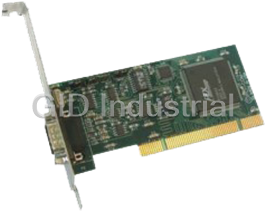
Low Profile single port asynchronous serial communication card that can be installed in any 3.3V or ...



 Manufacturers
Manufacturers

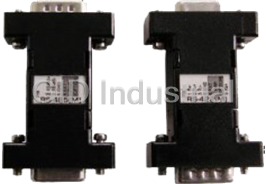
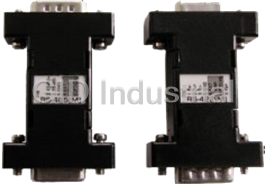
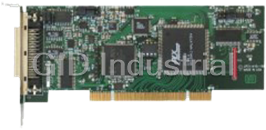
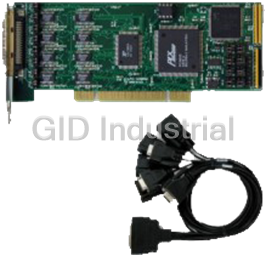




What they say about us
FANTASTIC RESOURCE
One of our top priorities is maintaining our business with precision, and we are constantly looking for affiliates that can help us achieve our goal. With the aid of GID Industrial, our obsolete product management has never been more efficient. They have been a great resource to our company, and have quickly become a go-to supplier on our list!
Bucher Emhart Glass
EXCELLENT SERVICE
With our strict fundamentals and high expectations, we were surprised when we came across GID Industrial and their competitive pricing. When we approached them with our issue, they were incredibly confident in being able to provide us with a seamless solution at the best price for us. GID Industrial quickly understood our needs and provided us with excellent service, as well as fully tested product to ensure what we received would be the right fit for our company.
Fuji
HARD TO FIND A BETTER PROVIDER
Our company provides services to aid in the manufacture of technological products, such as semiconductors and flat panel displays, and often searching for distributors of obsolete product we require can waste time and money. Finding GID Industrial proved to be a great asset to our company, with cost effective solutions and superior knowledge on all of their materials, it’d be hard to find a better provider of obsolete or hard to find products.
Applied Materials
CONSISTENTLY DELIVERS QUALITY SOLUTIONS
Over the years, the equipment used in our company becomes discontinued, but they’re still of great use to us and our customers. Once these products are no longer available through the manufacturer, finding a reliable, quick supplier is a necessity, and luckily for us, GID Industrial has provided the most trustworthy, quality solutions to our obsolete component needs.
Nidec Vamco
TERRIFIC RESOURCE
This company has been a terrific help to us (I work for Trican Well Service) in sourcing the Micron Ram Memory we needed for our Siemens computers. Great service! And great pricing! I know when the product is shipping and when it will arrive, all the way through the ordering process.
Trican Well Service
GO TO SOURCE
When I can't find an obsolete part, I first call GID and they'll come up with my parts every time. Great customer service and follow up as well. Scott emails me from time to time to touch base and see if we're having trouble finding something.....which is often with our 25 yr old equipment.
ConAgra Foods